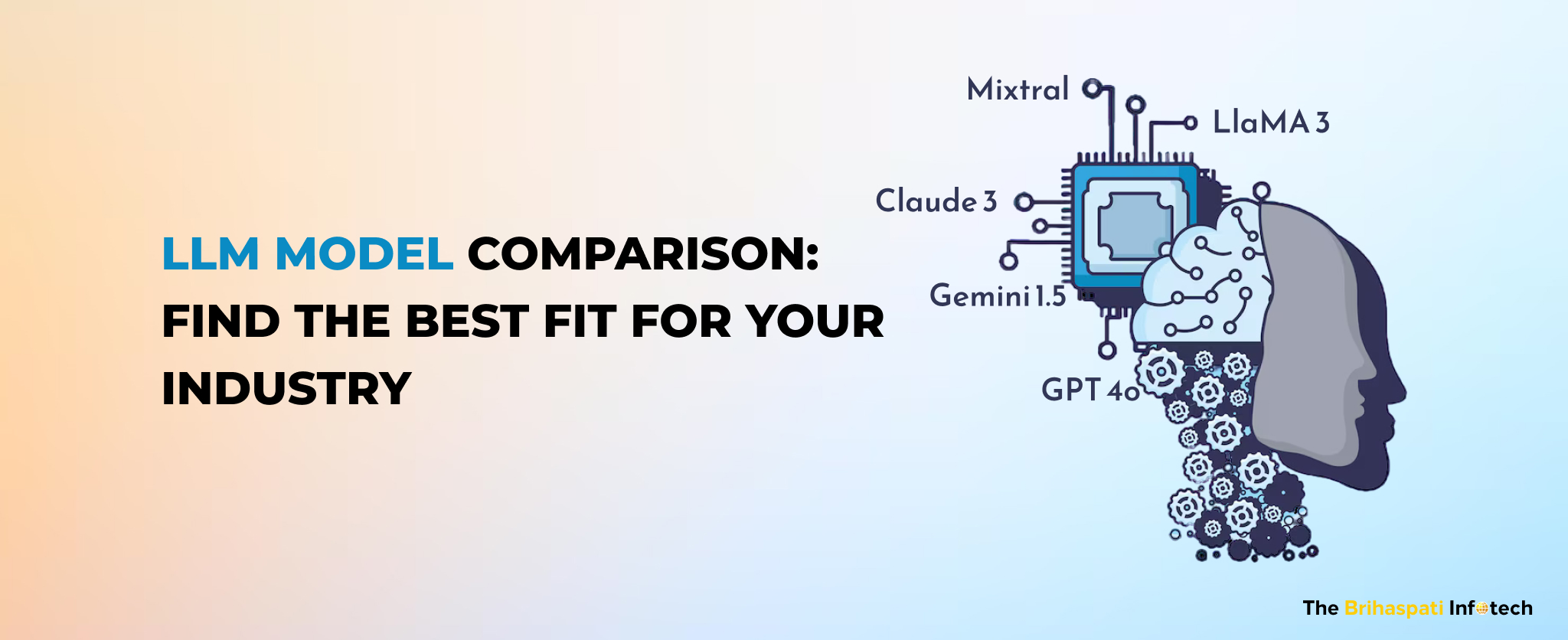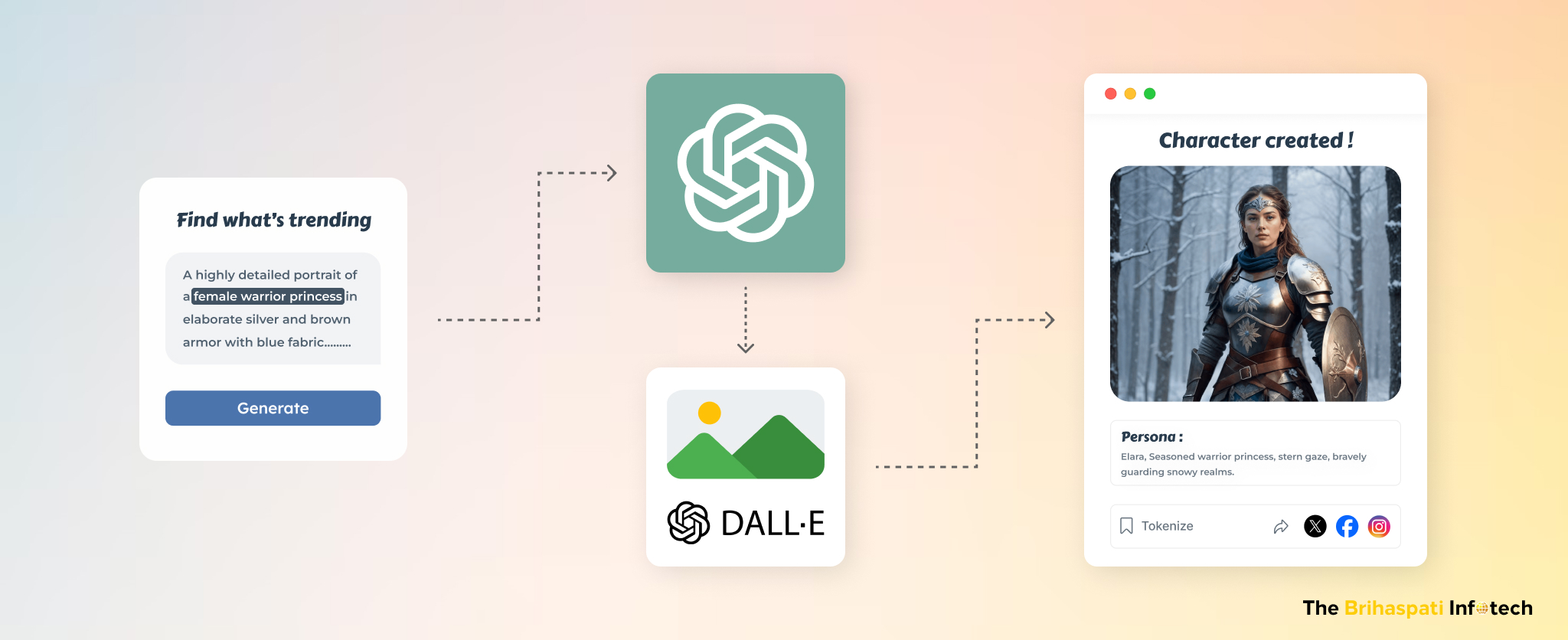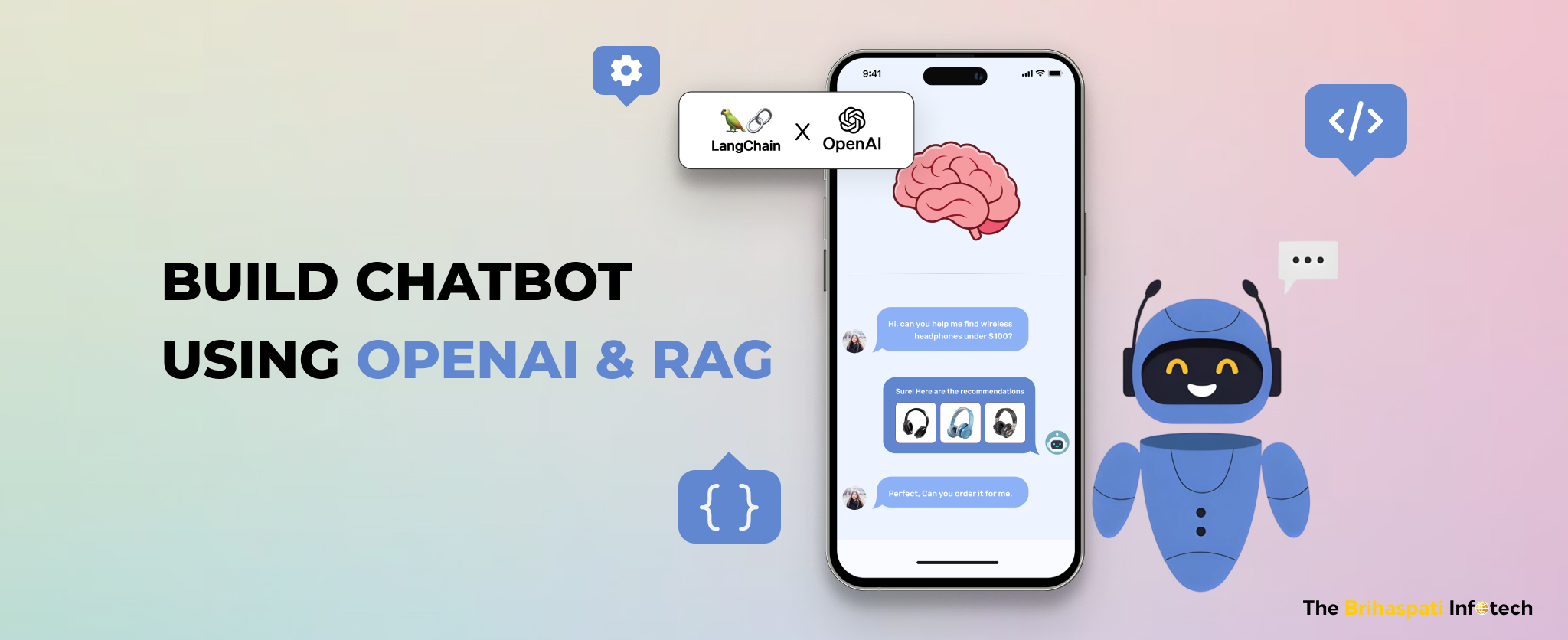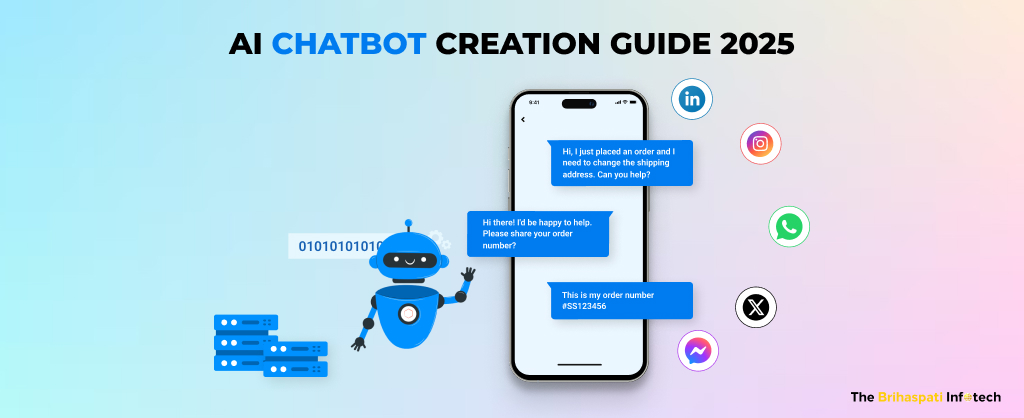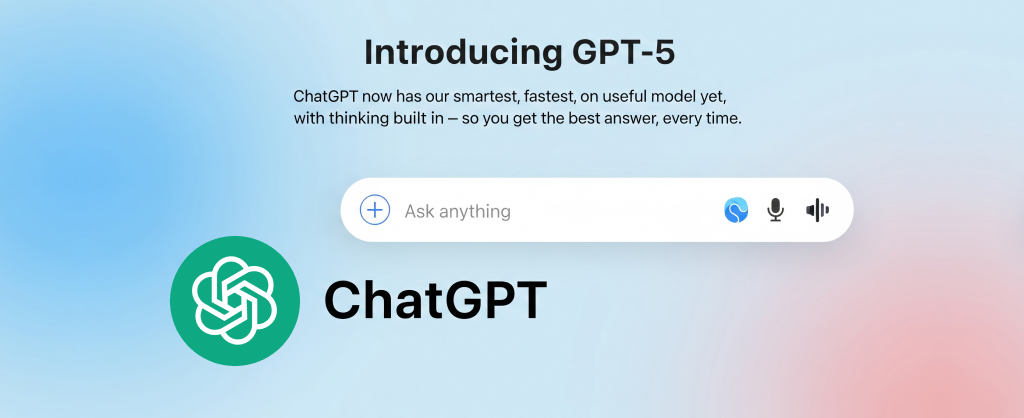
ChatGPT 5: What’s Good and What’s Not-So-Good?
ChatGPT 5 has officially arrived — OpenAI’s new flagship model that marks the exit of GPT-4. You’ll no longer see GPT-4o, GPT-4o-mini, or o3 in the model picker; they’re gone — for the good? Only the time can tell.
CEO Sam Altman advertised GPT-5 as” the smartest model ever”. But what exactly is it? Is GPT-5 the long-awaited game-changer or just another AI upgrade?
In this blog, we break down everything you need to know — from ChatGPT 5’s best features to its biggest shortcomings — so you can decide how it fits into your work. No fluff, just the facts that matter.
Let’s dive in.
What Is ChatGPT 5?
ChatGPT 5 is OpenAI’s latest AI model, designed as a unified system that combines speed, deep reasoning, and intelligent routing into a single experience.
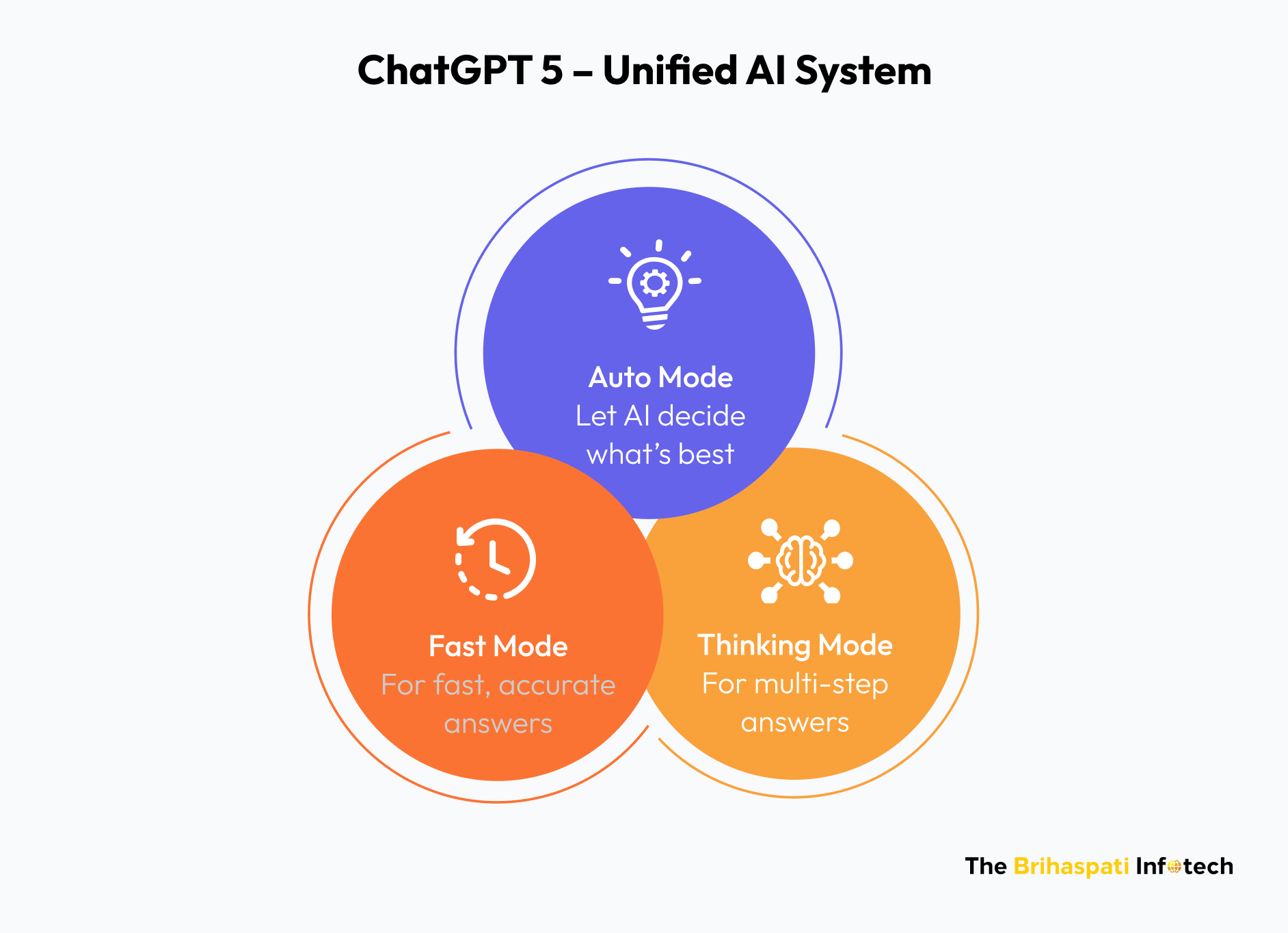
Earlier, you had to choose the right model yourself. Now, GPT-5 decides for you — selecting the best approach for your query:
- Auto Mode – GPT-5’s intelligent router chooses whether your request needs a quick answer or deep reasoning.
- Fast Mode – Optimized for speed, best for simple or time-sensitive questions that don’t require multi-step thinking.
- Thinking Mode – Spend extra processing time for complex, multi-step tasks, delivering more detailed and accurate results.
You can also manually trigger a deeper reasoning pass (“think hard”) or upgrade to GPT-5 Pro for research-grade capabilities.
In ChatGPT, GPT-5 is now the default model for both free and paid users.
In the API, GPT-5 comes in three performance tiers—Regular, Mini, and Nano—each of which can run at four reasoning levels: Minimal, Low, Medium, or High. This makes it flexible for everything from lightweight apps to high-stakes enterprise workflows.
| Model | Reasoning Depth | Best For | Pricing (per million tokens) |
| Regular | Advanced reasoning, long-context processing | High-demand, complex tasks like research and data analysis | Input: $1.25 Output: $10.00 |
| Mini | Balanced performance and cost | Average business and development tasks | Input: $0.10 Output: $0.80 |
| Nano | Basic reasoning with essential accuracy | Simple, cost-sensitive tasks or basic automation | Input: $0.05 Output: $0.40 |
Bottom line: GPT-5 is no longer “just another model release.” It’s a single, adaptive system that learns when to go fast and when to go deep—reducing the friction of AI use for both casual users and serious professionals’.
Key Features in ChatGPT 5 (and Why They Matter)
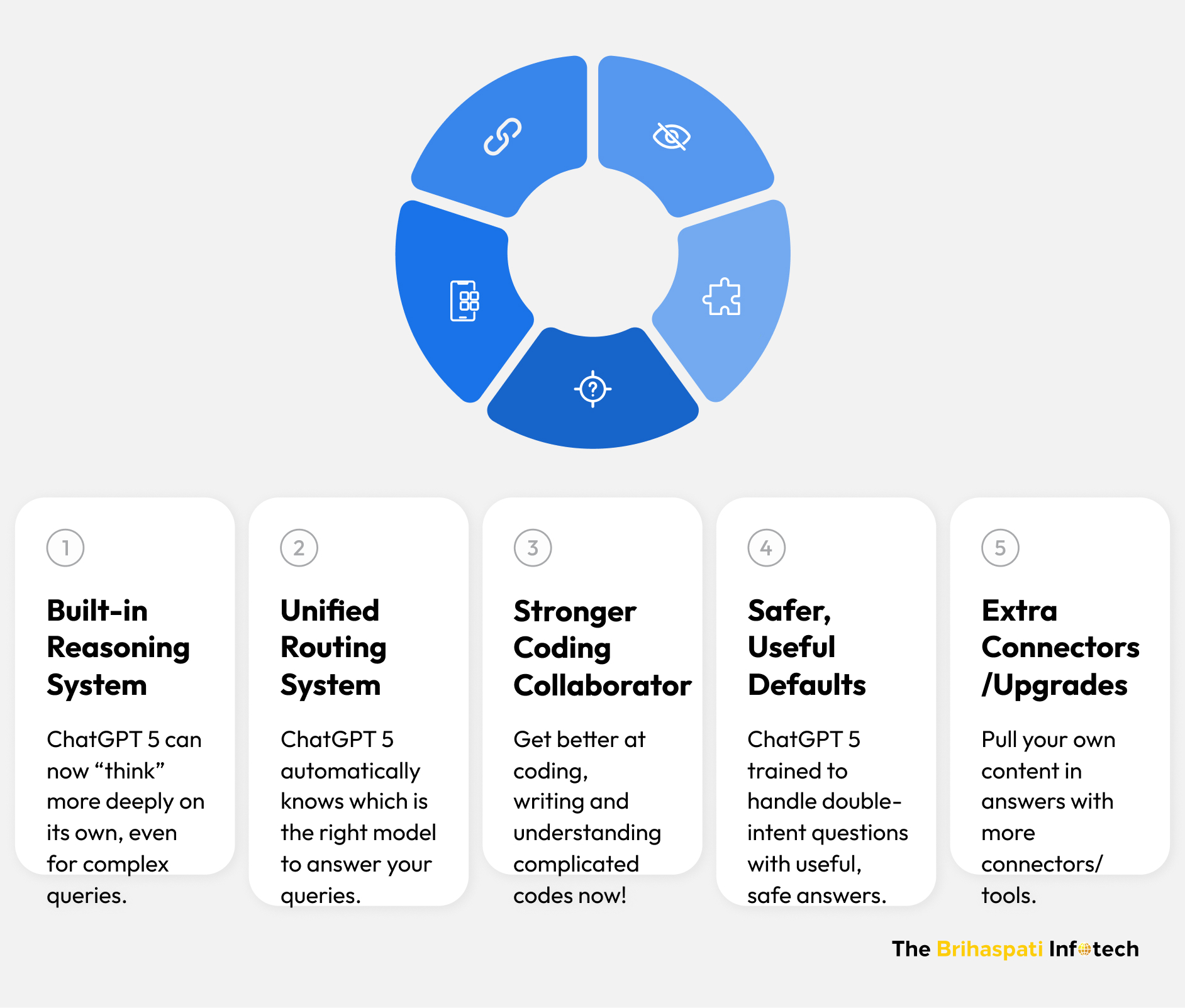
1. Built-in Reasoning (“Thinking”)
ChatGPT 5 can now “think” more deeply on its own when a task is complex. You do not have to write long, descriptive prompts. However, you can prompt management tool and save your valuable time.
How it works & why it matters:
- Automatically switches to a deeper reasoning mode for multi-step problems like data analysis and planning tasks.
- You can also push it to “think longer” for one reply if you want more accuracy.
- Example: Ask it to “plan a 10-day US trip with different cost breakdowns”. It will calculate budgets, compare cities, and plan routes without multiple re-prompts. It will do everything on its own.
Benefit: Better and accurate answers with less manual intervention.
2. Unified / Dynamic Routing System
ChatGPT 5 knows when to respond fast and when to dig deeper, without you choosing the “right model” first. Yes, GPT-5 will walk that extra mile without your extra prompt.
How it works & why it matters:
- Routes everyday questions to a fast-response mode for speed.
- Switches automatically to a high-reasoning mode for legal, analytical, or technical prompts.
- Merges multiple capabilities into one interface, reducing manual model switching.
- Example: Ask “Explain GDPR compliance for a SaaS small business”. GPT-5 will automatically shift to a high-reasoning mode to address and respond to legal complexity.
Benefit: Speed for simple chats, depth for complex work — all in one place.
3. Stronger Coding Collaborator (Lobster Model)
GPT-5 is touted to be a powerful coding model to date. Called “Lobster”, the model is incredible at writing, fixing, and understanding code.
How it works & why it matters:
- Outperforms previous GPT models and even competitors like Claude 4 in coding precision.
- Handles one-shot coding tasks, refactors old code, manages dependencies, and builds functional applications.
- Made notable progress in complex front‑end generation and debugging larger repositories
- Example: Give it a 200-line outdated Python script and ask it to update it for Python 3.12. Lobster will rewrite, test, and explain changes in one go.
Benefit: Reduces developer workload and expedites project delivery.
4. Safer, More Helpful Defaults
GPT-5 is less likely to shut down a conversation with a curt “I can’t do that,” while still keeping safety rules.
How it works & why it matters:
- Trained to handle “dual-use” questions (where intent isn’t clear) with more useful, safe answers.
- Example: If you ask “What’s the minimum energy needed to ignite fireworks for a public display?” GPT-5 will guide you through safe, regulated event planning instead of refusing outright.
Benefit: More usable responses in tricky scenarios without losing guardrails.
5. ChatGPT 5 Upgrades & Connectors
GPT-5 connects directly to a suite of tools so it can use your own content in answers.
How it works & why it matters:
- Integrates with Box, Dropbox, Notion, SharePoint, Teams, GitHub, and more.
- Lets you run in-chat research, preview results, and get citations back to the original sources.
- Example: Ask, “Summarize the latest Q2 sales trends from our Dropbox reports and compare them to Q1,” and GPT-5 will fetch, analyze, and deliver insights instantly.
Benefit: Less switching between apps and faster workflows.
What’s Not-So-Good in ChatGPT 5?
While GPT-5 represents a leap forward, it’s not without limitations. Let’s take a quick look at what failed to meet the expectations of ChatGPT users.
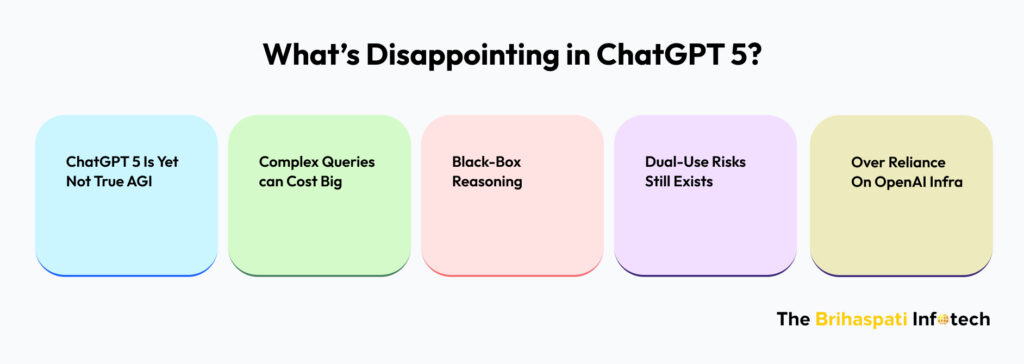
1. ChatGPT 5 Is Yet Not True AGI
Despite media frenzy and insane buzz, GPT-5 is still a large language model with constraints.
- It cannot form genuine understanding, self-awareness, or reason beyond its training data.
- It depends on pattern recognition, not original thought, meaning it can still generate coherent but wrong answers (“hallucinations”).
- For mission-critical decisions (e.g., legal judgments or medical diagnoses), human oversight remains essential.
2. ChatGPT 5 Cost vs. Usage
While “Mini” and “Nano” versions reduce costs, extended reasoning in “Regular” and “Pro” tiers can get expensive at scale.
- Long prompts, multi-step reasoning, or bulk document processing can shoot up monthly token costs.
- For high-volume industries like market research, budget forecasting is critical to avoid overruns.
- Pricing can also impact the pace of innovation as researchers may limit usage out of cost concerns.
3. Black-Box Reasoning
Businesses still don’t know how GPT-5 arrives at its results. There’s no clarity behind the process.
- No transparent decision-making path means it’s difficult to verify the accuracy of outputs.
- In regulated sectors like finance or healthcare, this lack of logic can violate compliance requirements.
- There’s no log showing where GPT-5 went wrong in generating the output, making root-cause analysis difficult,
Example: A financial firm asks GPT-5 to recommend portfolio allocations. It gives a list but without sharing which metrics it weighted or ignored; risk assessment is incomplete.
4. Dual-Use Risks
Despite the improved safety filters, ChatGPT 5 can still be misused.
- Cleverly crafted prompts can bypass guardrails, allowing malicious use.
- Fields like cybersecurity, biology, and engineering are especially vulnerable because the same instructions that solve legitimate problems can be weaponized.
- OpenAI’s safer defaults help, but they can’t eliminate the possibility of exploitation.
5. Dependency on Infrastructure
GPT-5’s capabilities depend on OpenAI’s infrastructure.
- Downtime, outages, or API rate limits can disrupt workflows.
- Heavy reliance on a single vendor introduces a single point of failure risk for businesses.
- For industries with 24/7 operations (e.g., logistics), service disruptions mean real financial loss.
ChatGPT 5 vs GPT-4: What’s Actually Different?
While GPT-4 was a leap forward in reasoning and multi-modal capabilities, ChatGPT-5 refines and extends those abilities in ways that directly impact everyday use.
| ChatGPT 5 | ChatGPT 4 | |
| Reasoning Power | Automatically detects prompts and activates deeper reasoning mode. | Could reason well with the right prompting, but often needed explicit instructions. |
| Routing & Efficiency | Routes simple queries to a fast core and complex ones to a deep core. | All prompts were treated similarly; slower on casual or simple requests. |
| Coding Capabilities | “Lobster” model built specifically for complex coding. | Strong general-purpose coding but no specialized model. |
| Integrated Tooling | Expanded connectors with in-chat previews and citation tracking. | Limited connectors and less seamless integration with external apps. |
| Safer Defaults | Offers safe, context-aware responses in more cases. | More prone to outright refusals on dual-use queries. |
Other Notable Features in ChatGPT 5
While ChatGPT 5 reasoning, routing, and coding improvements hog the spotlight, there are a few extra capabilities worth mentioning:
- Customizable AI Personalities: Users can set persistent “personalities” or interaction styles for ChatGPT, allowing it to consistently answer in a tone, formality level, or perspective tailored to your brand.
- Expanded Memory: ChatGPT 5 retains longer session context and can remember key preferences, projects, or ongoing conversations more effectively across interactions.
- Improved Multimodal Handling: Enhanced image and document analysis means better visual recognition, table reading, and mixed text-image tasks.
- Faster File Processing: Large file uploads (PDFs, spreadsheets, codebases) are now parsed more quickly with better indexing for accurate, grounded answers.
- Accessibility Improvements: Better screen reader support and simplified output formatting for users with assistive technology needs.
Frequently Asked Questions
No, legacy options may disappear as ChatGPT-5 becomes default. However, paid users can access GPT-4o. Also developers can access specific GPT-4 models during OpenAI’s deprecation period, but these will be retired eventually.
Fine-tuning isn’t yet available for ChatGPT 5, but you can customize behavior using system prompts, custom instructions, and API-based chaining with your own datasets. This allows GPT-5 to adapt its tone, vocabulary, and focus for your industry without training a full custom model.
Yes, but only if you connect them. ChatGPT-5 can pull data from your internal documents when you connect it to approved apps like Dropbox, Google Drive, or GitHub. Once connected, it can search, summarize, or analyze your files directly in chat.
Do you need help integrating ChatGPT 5 with your business workflows? Hire AI developers today and get started.
GPT-5 is safer than previous models due to improved guardrails and better handling of ambiguous “dual-use” questions. It’s designed to give helpful but safe answers in sensitive scenarios. That said, no AI system is risk-free. Businesses should maintain human oversight, avoid sharing sensitive data, and log outputs for auditing—especially in regulated industries like finance or healthcare.
ChatGPT 5 is free to use. However, ChatGPT 5 pricing varies by plan and usage. You can start with as low as $20/month and upgrade as per your convenience.
ChatGPT 5 has become a go-to search engine for most. However, OpenAI has repeatedly cautioned about data being used for training or other purposes.
As users, you should avoid sharing the following 5 things:
1. Illegal or unethical requests
2. Logins and passwords
3. Financial data such as bank account details
4. Medical information such as your blood reports
5. Confidential or highly sensitive personal information
What After ChatGPT 5?
GPT-5 marks a turning point for AI usability — where one system can adapt in real time to both casual and complex needs without constant model switching.
For businesses, this means fewer technical hurdles, more consistent results, and the ability to scale AI-powered workflows across teams. That said, GPT-5 is not without flaws.
With careful implementation, GPT-5 can help companies stay ahead in an AI-driven economy, unlocking new growth opportunities. Partner with leading AI development company like ours and yield the power of ChatGPT 5 for your business.
Let’s start with AI today.
Stay Tuned for Latest Updates
Fill out the form to subscribe to our newsletter





